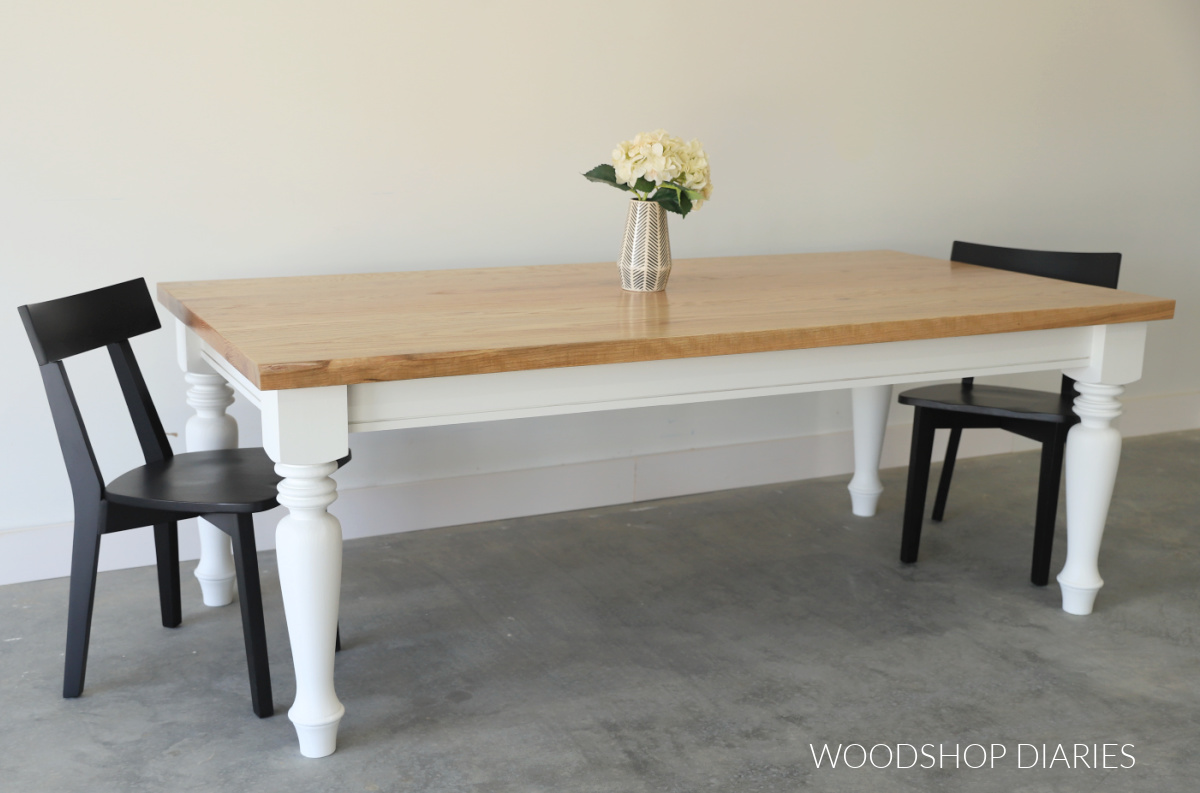Customize Your Table with Special Dining Table Legs Wood Creations
Customize Your Table with Special Dining Table Legs Wood Creations
Blog Article
Secret Aspects to Bear In Mind for Dining Table Legs Timber Choices
When selecting wood for dining table legs, numerous vital aspects require cautious factor to consider to ensure both capability and visual appeal. The option of wood kind, defined by its sturdiness and unique grain patterns, plays a critical duty in the total design and long life of the piece.
Timber Types and Attributes
When choosing timber for eating table legs, it is crucial to understand the distinct features of different wood kinds. Various timbers provide distinctive advantages and disadvantages, affecting both the longevity and aesthetic appeal of the completed item.
Oak, understood for its impressive durability, also includes a prominent grain that can include character to the table. Cherry timber, with its abundant shade that strengthens over time, provides an extravagant look yet may need even more maintenance to stop scrapes.
On the other hand, softwoods like yearn and fir are much more inexpensive and simpler to function with, yet they are much less sturdy than hardwoods. Pine is lightweight and includes a cozy, rustic look, making it a preferred option for informal eating settings. However, it is extra susceptible to scrapes and damages.
Recognizing these characteristics will help in making an informed choice to make sure the legs of the eating table meet both functional and visual demands.
Grain Patterns and Appearance
The timber's grain is not just a visual characteristic; it imparts a distinct individuality and charm to each item. Different timber varieties exhibit distinct grain patterns, ranging from the straight lines of maple to the elaborate swirls of oak and the striking figure of walnut.
Additionally, the alignment and scale of the grain can influence the regarded size and beauty of the table. Larger, much more noticable grains might offer a vibrant, remarkable impact, while finer, subtler grains can develop an improved, downplayed look. Furthermore, the finishing procedure can better boost these patterns, emphasizing the all-natural charm of the wood and highlighting rich tones.
Eventually, the selection of grain pattern should integrate with various other design elements, such as the table top and bordering furnishings, making sure a natural visual that boosts the dining experience. Thoughtful option of timber grain not just contributes to the table's elegance however additionally reflects the proprietor's preference and design.
Toughness and Toughness
The durability and toughness of dining table legs are critical considerations for making certain long life and stability in any kind of eating room. Selecting the best timber is important, as various varieties show differing degrees of resilience.

Inevitably, spending in premium timber and robust construction approaches will generate an eating table that stands the test of time, while giving a trusted structure for numerous dishes shared pop over to this web-site among household and pals. Prioritizing resilience and toughness guarantees that your eating table stays useful and visually pleasing for many years to come.
Upkeep and Care
Proper maintenance and treatment are essential for protecting the longevity and strength of table legs Source made from wood. Regular cleansing is crucial; making use of a soft, damp fabric makes certain that dirt and debris do not accumulate, which can cause scratches and monotony. It is recommended to avoid harsh chemicals or rough materials that could harm the finish.
Additionally, applying an appropriate wood polish or wax occasionally can aid preserve the luster and shield the wood from wetness and spills. It is critical to follow the producer's referrals concerning the type of product to utilize, as certain finishes may respond adversely to specific chemicals.
Moisture and temperature level changes can likewise impact wood table legs, causing them to warp or fracture. It's finest to put the table far from straight sunlight and heat sources. Resolving these promptly can stop further damage. if the table legs have any type of damages or scrapes.
Last but not least, periodically inspecting the joints and screws for tightness is essential to keep architectural stability (Dining Table Legs Wood). By sticking to these upkeep practices, house owners can ensure their wood eating table legs continue to be enticing and practical for years to come
Ecological Factors To Consider
When choosing wood for dining table legs, it's necessary to take ecological factors to consider right into account. The sourcing and sustainability of wood are paramount in lessening eco-friendly effect. Choosing wood from licensed resources, such as those recommended by the Woodland Stewardship Council (FSC), makes sure that the timber is harvested responsibly, advertising forest preservation and biodiversity.

In addition, neighborhood sourcing of wood decreases transportation emissions, supporting neighborhood economies while lessening ecological influence. It is also a good idea to be aware of the timber's therapy and finishing processes, as certain chemicals can be hazardous to both human health and the atmosphere. By focusing on sustainable timber selections, customers can add to environmental conservation while appreciating the resilience and elegance of their table legs.
Final Thought
In verdict, choosing wood for dining table legs demands careful consideration of different factors, including timber types, grain patterns, and sturdiness. Upkeep demands why not try here and ecological sustainability further influence timber choices, highlighting the importance of sourcing from licensed or recovered products.
When selecting wood for dining table legs, numerous vital variables require cautious factor to consider to ensure both capability and visual appeal.Proper maintenance and care are essential for preserving the sturdiness and strength of dining table legs made from wood.When choosing timber for dining table legs, it's necessary to take ecological factors to consider into account. By prioritizing lasting timber selections, customers can contribute to ecological conservation while enjoying the resilience and charm of their eating table legs.
In verdict, picking timber for eating table legs necessitates cautious consideration of different aspects, including wood kinds, grain patterns, and longevity. Dining Table Legs Wood.
Report this page